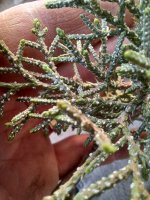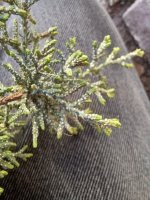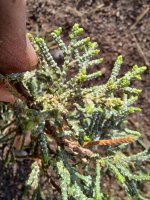Desert O'Piñon
Omono
So I know. I know to check the mother tree overall health first. But was excited about native Alligator Juniper. My neighbor gave me permission to take a few cuttings, but I didn't look closely until I was ready to put them in the substrate. I'm pretty sure it's a scale of some sort, if it's anything.
Also, I didn't see a category for tree diseases, infestations, or other such issues, so I hope this is the right place for this thread.


Also, I didn't see a category for tree diseases, infestations, or other such issues, so I hope this is the right place for this thread.





